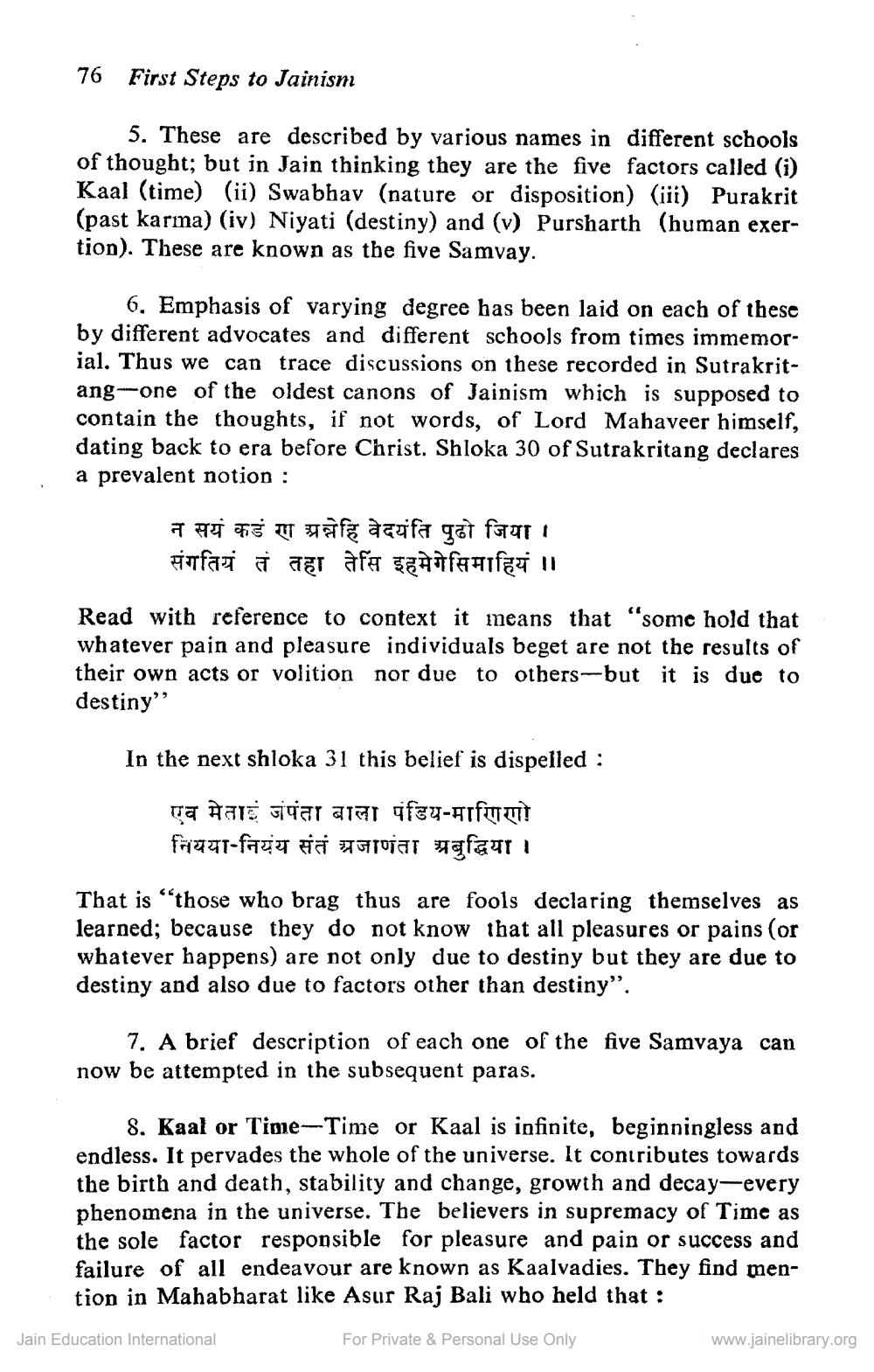________________
76
First Steps to Jainism
5. These are described by various names in different schools of thought; but in Jain thinking they are the five factors called (i) Kaal (time) (ii) Swabhav (nature or disposition) (iii) Purakrit (past karma) (iv) Niyati (destiny) and (v) Pursharth (human exertion). These are known as the five Samvay.
6. Emphasis of varying degree has been laid on each of these by different advocates and different schools from times immemorial. Thus we can trace discussions on these recorded in Sutrakritang-one of the oldest canons of Jainism which is supposed to contain the thoughts, if not words, of Lord Mahaveer himself, dating back to era before Christ. Shloka 30 of Sutrakritang declares a prevalent notion :
न सयं कडं ण अन्नेहि वेदयंति पुढो जिया । संगतियं तं तहा तेसि इहमेगेसिमाहियं ॥
Read with reference to context it means that "some hold that whatever pain and pleasure individuals beget are not the results of their own acts or volition nor due to others-but it is due to destiny
In the next shloka 31 this belief is dispelled :
एव मेताई जंपंता बाला पंडिय-माणिगो नियया-नियंय संतं अजाणता अबुद्धिया।
That is those who brag thus are fools declaring themselves as learned; because they do not know that all pleasures or pains (or whatever happens) are not only due to destiny but they are due to destiny and also due to factors other than destiny".
7. A brief description of each one of the five Samvaya can now be attempted in the subsequent paras.
8. Kaal or Time-Time or Kaal is infinite, beginningless and endless. It pervades the whole of the universe. It contributes towards the birth and death, stability and change, growth and decay-every phenomena in the universe. The believers in supremacy of Time as the sole factor responsible for pleasure and pain or success and failure of all endeavour are known as Kaalvadies. They find mention in Mahabharat like Asur Raj Bali who held that :
Jain Education International
For Private & Personal Use Only
www.jainelibrary.org




